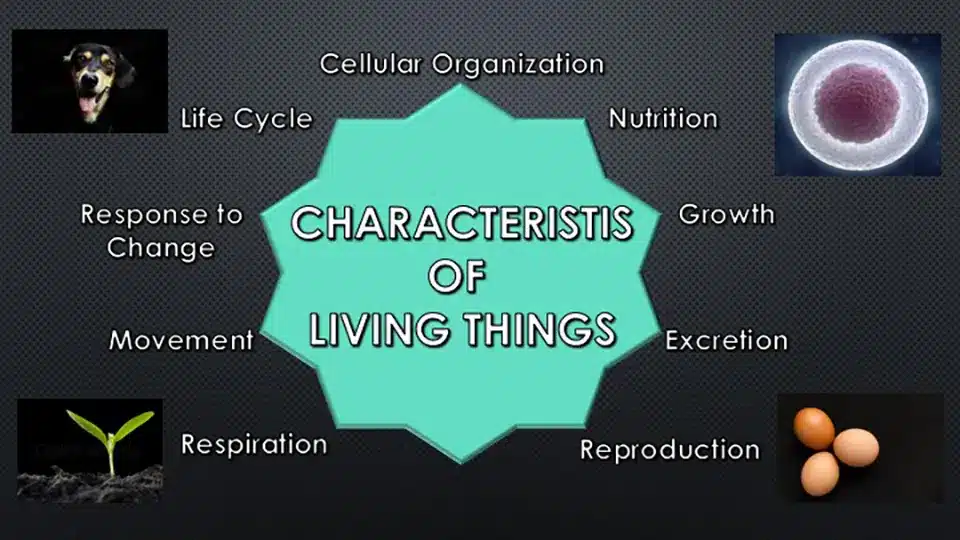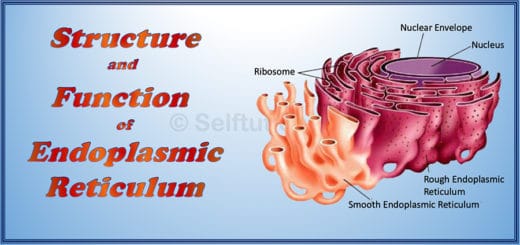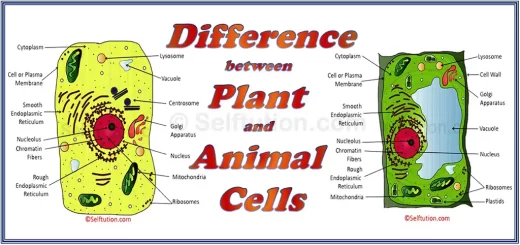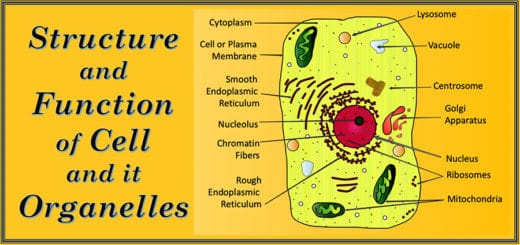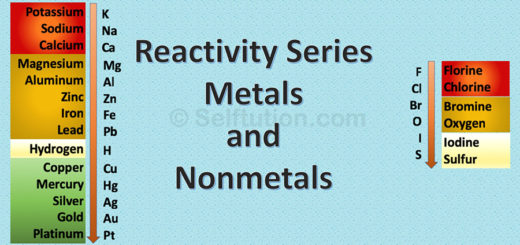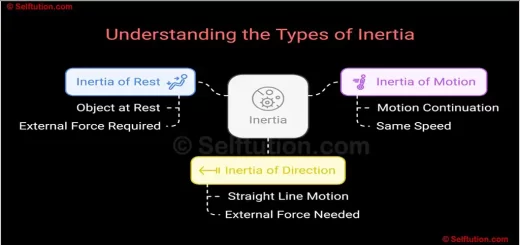CHARACTERISTICS OF LIVING AND NON-LIVING THINGS
There are millions of things in this World, some alive and some not. How do we distinguish between what’s alive and what’s not? In this post, we’ll delve into the characteristics of living and non-living things to help us answer this question. We’ll also explore the similarities shared by both living and non-living entities.
LIVING AND NON-LIVING THINGS
Living things have distinct traits that differentiate them from non-living objects. One such trait is their ability to grow, increasing in size and complexity over time. Additionally, living organisms can reproduce, creating new individuals of their kind. They also adapt to environmental changes to ensure survival and well-being. These traits collectively define what it means to be alive.
In contrast, non-living things cannot grow, reproduce, or respond to their surroundings. They do not exhibit the dynamic processes that living organisms undergo. However, despite these differences, there are also similarities between living and non-living things. Both types of entities occupy space and have mass, and they interact with each other and their environment in various ways.
By comprehending these distinctions and commonalities, we gain a deeper understanding of the characteristics of living and non-living things.
Before we proceed further, here are some examples of living and non-living things:
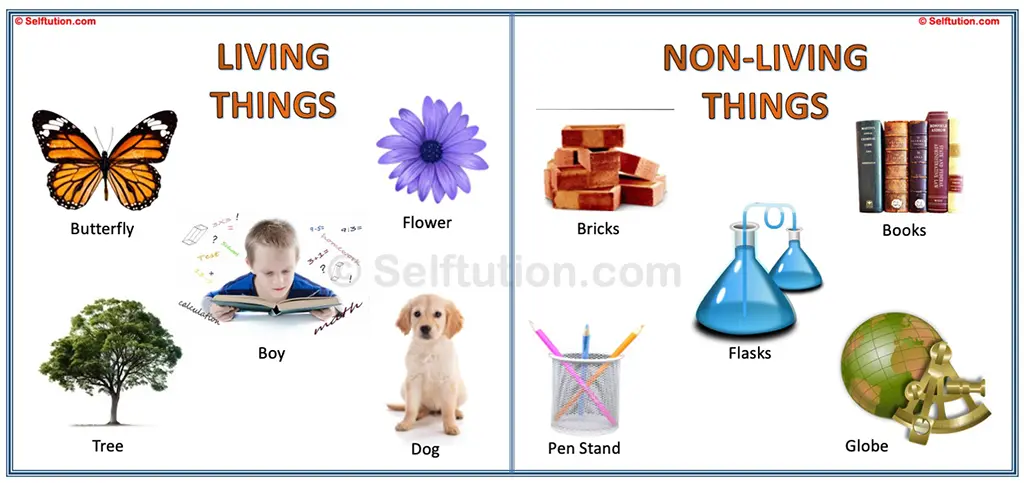
Examples of Living and non-living things
In the picture, if we look at a plant and a book, we will notice that these two objects differ in some respects. A book can’t move by itself, eat, grow, or make more books like itself. But a plant can do all these things. Its stem grows up, it can get its food, and it makes more plants of the same kind. So here, we identify a few characteristics that help us to differentiate between living and non-living things.
COMMON CHARACTERISTICS OF LIVING AND NON-LIVING THINGS
From the above picture, we can identify the following two common characteristics of living and nonliving things:
Cells are the basic structural units of living things. They do not exist in nonliving things
- All living things are made of stuff called matter. It possesses mass and occupies space.
- Both living and nonliving things have structural units. Living things have small parts called cells, and nonliving things have tiny parts called molecules.
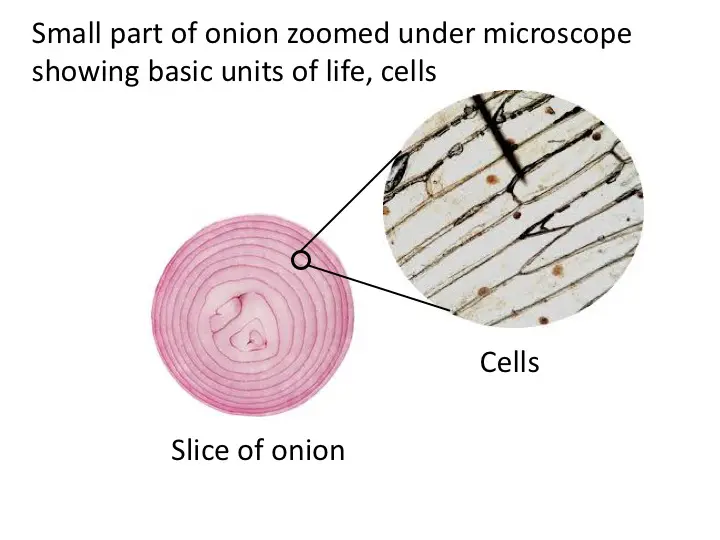
Onion rings showing cells
DIFFERENCE BETWEEN LIVING AND NON-LIVING THINGS
Defining “life” isn’t easy; it’s unique and special. Instead of pinpointing an exact definition, we focus on the characteristics that set living things apart from non-living ones. While non-living objects may display some of these traits, they don’t possess all of them. For instance, a machine can move but it can’t grow or make another machine like itself.
CHARACTERISTICS THAT DIFFERENTIATE LIVING AND NON-LIVING THINGS
Nine characteristics distinguish living things from non-living ones, which are as follows:
1. CELLULAR ORGANIZATION
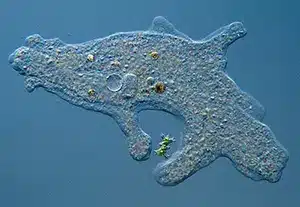
Amoeba
Among all the characteristics that define life, cellular organization stands out as the most significant feature distinguishing living from non-living things. Every living organism, whether it’s a plant or an animal, is composed of microscopic units known as cells. These cells serve as the fundamental building blocks of life, providing structure and carrying out essential functions. In contrast, non-living objects lack this intricate cellular structure. Some living organisms, such as amoebas, euglenas, and bacteria, consist of a single cell, earning them the title of unicellular organisms. However, the majority of living beings are multicellular, comprising billions of cells working together harmoniously. Examples of multicellular organisms range from fruits like mangoes to creatures like butterflies and even majestic mammals such as elephants, tigers, and cats.
2. NUTRITION
Living beings, like animals and plants, need nutrition, which is the process of taking in food. This food supplies them with energy for their activities and aids in their growth and repair
Animals acquire ready-to-consume food, such as milk, bread, meat, eggs, vegetables, and fruits, to fulfill their nutritional requirements and maintain their energy levels. In contrast, plants manufacture food through photosynthesis, utilizing carbon dioxide, water, and nutrients from the soil. This process enables them to grow and sustain independently, without dependence on external sources.
Therefore, the ability to obtain and utilize nutrition is a key characteristic that distinguishes living organisms from non-living things. Living things actively seek out or produce their food to sustain life processes, while nonliving things do not engage in such activities
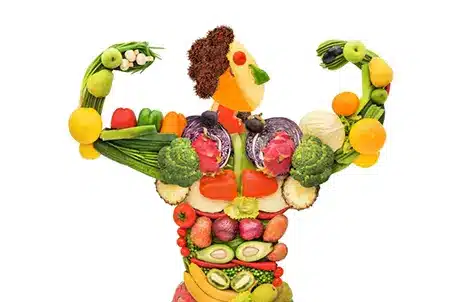
Proper nutrition is Important for Growth
3. GROWTH
Consider the transformation of a baby into an adult or the journey of a seed evolving into a plant. This process is called growth, and it’s permanent and irreversible. All living entities, plants or animals, undergo this fundamental aspect of life. However, how growth unfolds can vary between different organisms.
In contrast, nonliving objects lack the inherent ability to undergo growth. Any apparent expansion or development in non-living entities is attributed to external influences. For instance, the construction of a house may involve an increase in size, but this growth is facilitated solely by external factors such as human labor and construction materials. Should these external stimuli cease, the non-living entity would remain static and devoid of any further expansion
4. EXCRETION
Excretion is the process of removal of waste material from the body. The removal of waste material from the body is crucial for maintaining the health and proper functioning of living organisms. Accumulation of waste material within the body can be detrimental to all living beings. Consequently, living organisms have evolved mechanisms to eliminate waste materials. In animals, waste materials are expelled from the body in various forms, including urine, sweat, and carbon dioxide. These byproducts of metabolic processes are actively removed to prevent internal imbalances and toxicity.
Plants, while ridding themselves of waste gases and excess water, utilize a different mechanism. Through small pores called stomata located on the surface of their leaves, plants release waste gases such as carbon dioxide and water vapor. This process ensures the proper exchange of gases necessary for photosynthesis and respiration, thereby maintaining the health and vitality of the plant.
In contrast, non-living entities do not generate waste material through metabolic processes and therefore do not require mechanisms for waste removal.
5. REPRODUCTION
If someone were to ask you about one of the most distinctive features of life that sets living things apart from non-living things, your answer would likely be reproduction. Reproduction is the remarkable ability of all living organisms to produce offspring of their kind. For instance, a hen lays eggs that hatch into chicks, which then mature into hens or roosters. Similarly, a dog gives birth to puppies that grow into adult dogs or bitches. Likewise, a mango tree bears fruits containing seeds that germinate into new mango trees. However, it’s impossible to replicate this reproductive process with inanimate objects like tables or chairs.

The life cycle of Hen
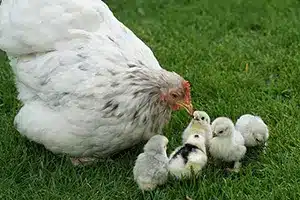
Hen with her newborn chicks
6. RESPIRATION
Respiration, a fundamental process for both animals and plants, entails the intake of oxygen from the surrounding air and the release of carbon dioxide as a byproduct. This exchange of gases is vital for sustaining life. Animals and plants alike harness oxygen to break down the nutrients obtained from food or photosynthesis, respectively, converting them into a form of energy known as adenosine triphosphate (ATP). This energy is the currency of life, fueling cellular activities such as growth, movement, reproduction, and maintenance of internal functions. Moreover, respiration is not solely confined to oxygen uptake and carbon dioxide release; it encompasses a series of complex biochemical reactions occurring within cells, involving various enzymes and metabolic pathways. Thus, respiration serves as the cornerstone of energy production and utilization in living organisms, facilitating their survival and enabling them to thrive in diverse environments.
7. MOVEMENT
Living things exhibit movement. Every day, you witness animals, birds, insects, and humans moving from one place to another. This form of movement is termed locomotion. Animals move for two primary reasons: to seek out food and to evade predators.
Some animals, like the hydra and sponge, do not move around to search for food. They remain fixed to the ground and capture food using elongated structures called tentacles. Most plants are rooted in the soil and cannot perform locomotion, but they do exhibit movement. The stem moves upward and sideways in plants to optimize leaf exposure to sunlight. Additionally, the roots of a plant extend downward and sideways in the soil, providing structural support and foraging for nutrients and water.
For better visualization of movement by plants check out this time-lapse video by Gardening at 58 North
Some nonliving things also exhibit movement; for instance, a car or a bus moves, and the hands of a clock tick forward. But is the movement of these things similar to that of living beings? The answer is ‘No.’ Cars, buses, and clock hands move due to the chemical energy supplied by petrol, diesel, or batteries, which are external factors.
8. RESPONSE TO CHANGE
Anything that produces a response in an organism is called a stimulus.Living things demonstrate responsiveness to changes in their environment, a vital characteristic that distinguishes them from nonliving entities. For instance, in cold weather, we instinctively don woolen clothes to keep warm. If we accidentally touch something hot, our immediate response is to withdraw our hands to avoid injury. Similarly, during drought conditions, plant roots extend deeper into the soil in search of water, showcasing their adaptive behavior to ensure survival.
9. LIFE CYCLE
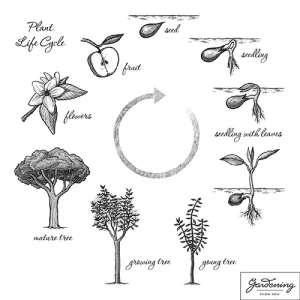
Image courtesy: www.clipartxtras.com
Living things embark on a life cycle, beginning as a single cell and progressing through stages of growth, reproduction, and eventual death. This cycle spans a varied timeframe, ranging from mere hours to several centuries. This duration, known as the lifespan, varies greatly among different organisms. Bacteria, for instance, complete their life cycle within minutes, showcasing rapid turnover. In contrast, creatures like tortoises boast extensive lifespans, enduring for up to 120-150 years. Regardless of the length, all organisms navigate through this cycle, with each stage contributing to the intricate tapestry of life on Earth. Through growth, reproduction, and eventual demise, living beings perpetuate their existence, shaping the rich diversity and complexity of the natural world.
CHARACTERISTICS OF NON-LIVING THINGS
As discussed above, the important characteristics of non-living things can be summarized below:
- All nonliving things consist of microscopic structures called atoms.
- They do not require food for energy to perform various activities.
- Nonliving things do not experience growth in size; any growth observed is due to external factors.
- Nonliving things do not engage in excretion.
- They do not reproduce or give birth to offspring of their kind.
- Nonliving things cannot move autonomously. However, certain nonliving objects, such as cars and buses, can move due to chemical energy provided by sources such as petrol, diesel, or batteries, which are external factors.
- Nonliving things do not engage in respiration or respond to external stimuli.
- Lastly, nonliving things do not undergo a life cycle.
DIFFERENCE BETWEEN NON-LIVING AND DEAD
We can call only those things dead, which once lived and followed the life cycle. For example, we can call a block of wood and a leather dead because they come from organisms that once lived. But a chair made of wood or a shoe made of leather is nonliving. Stone, water, and a car are nonliving because they never show any of the characteristics of life or living things. So, to summarize, a dead thing is the one that once lived, and showed one or more characteristics of life, whereas nonliving things are those which were never alive. The difference between nonliving and dead in tabular form are as below:
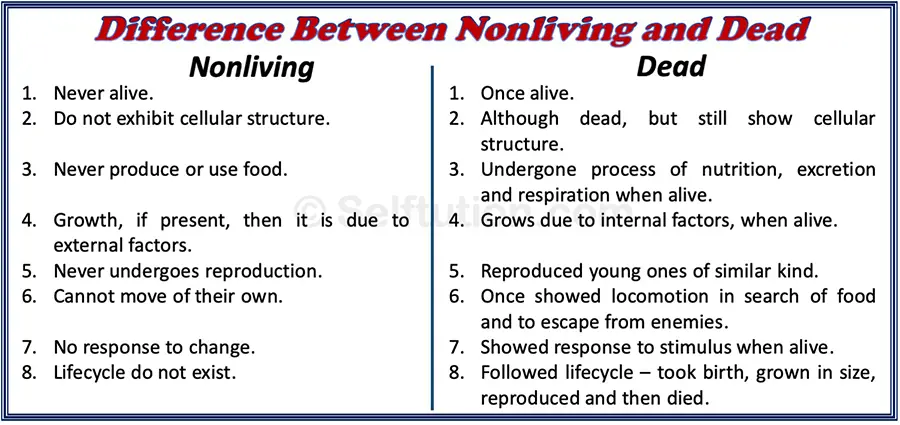
Difference between non-living and dead
END…..Characteristics of living and nonliving things
